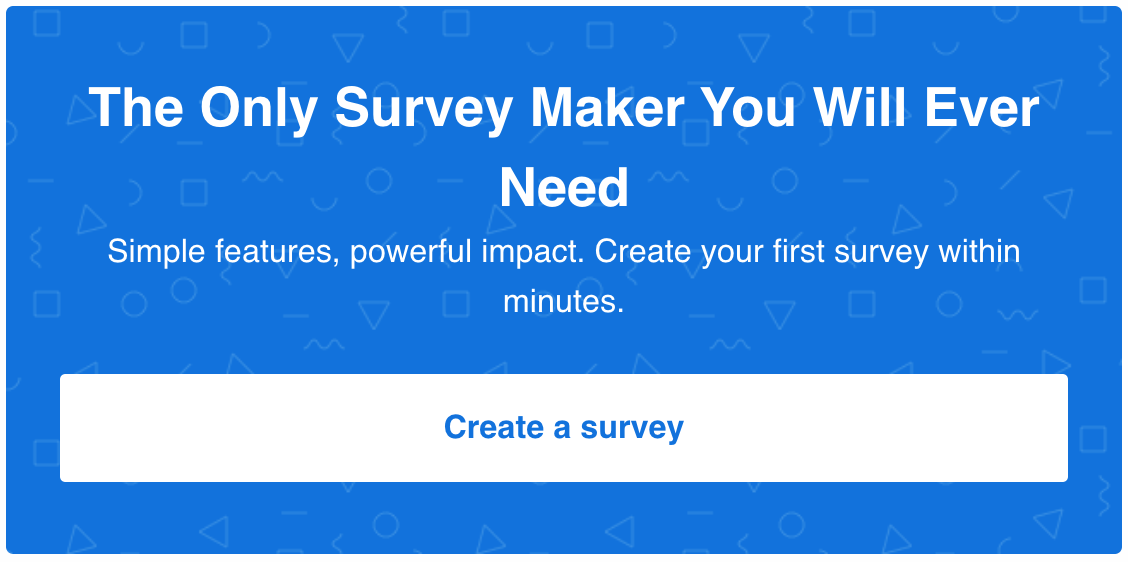Looking to conduct research? Want to run a survey? Need to collect people’s opinions and attitudes?
One of the first things you need to decide on is the survey technique and methodology. And one of the essential questions that raises is – which survey scale are you going to use?
With so many measurement scales out there, novel researchers and marketesrs are often confused when they need to do any kind of more significant statistical research and data analysis.
To help make a more informed decision, we are going to present you with the semantic differential scale, one of the simplest and easiest to use survey scales. It is commonly used in marketing research, in the form of questionnaires, surveys, interviews, and focus groups, and is best suited for different kinds of consumer research.
First, we are going to briefly define the semantic differential scale. Then, I’m going to share some examples of how you can use it in surveys and compare it to other popular survey scales to give you a full picture of what you can use it for.
Let’s start.
What is a semantic differential scale?
Semantic differential scale was invented by Charles Egerton Osgood, a well-known American psychologist, as a means to record the connotative meaning of emotional attitudes towards different topics and be able to easily use and analyze the findings.
Today, semantic differential scales are primarily used in questionnaires and surveys to obtain people’s emotional reaction or attitude towards a particular topic and to allow customers to rate products, services, brands, or organizations.
Typically, a semantic differential scale is a rating scale that begins and ends with rating options that are semantically opposite (usually polar adjectives, such as “like-dislike”, “satisfied-dissatisfied”, “would recommend-wouldn’t recommend”) and can contain various degrees of those options in between.
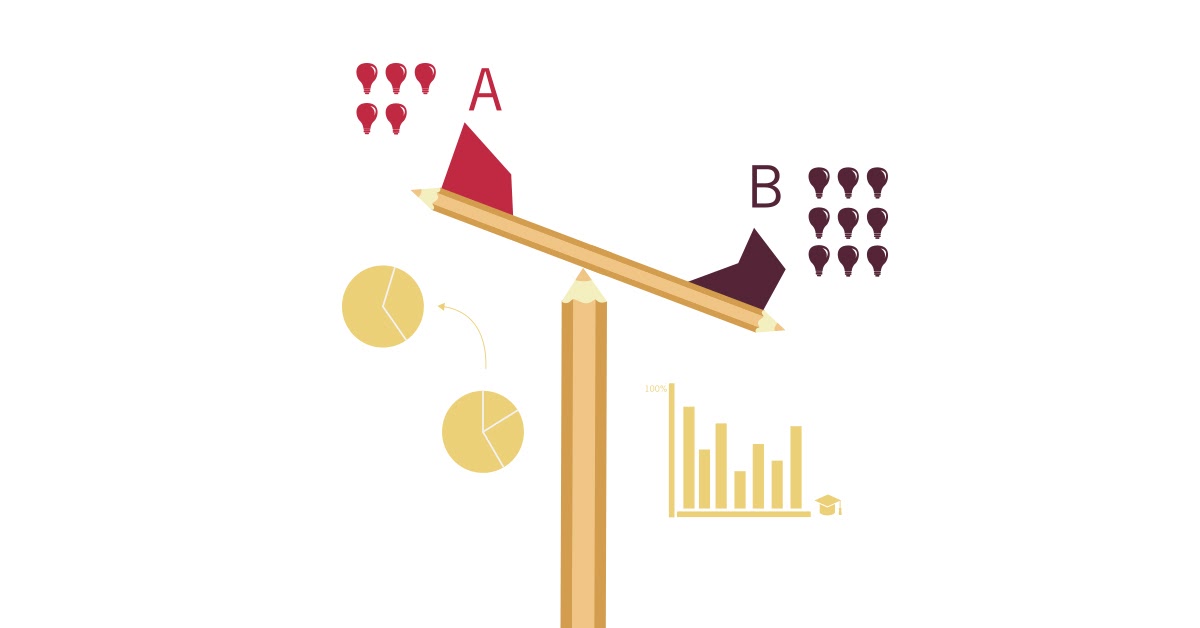

Different types of semantic differential scales
When Osgood first conducted his research, he discovered that three scales were commonly and universally useful:
- Evaluation. A scale that determines whether someone has a positive or negative opinion about a certain topic. (Commonly used adjectives: Bad – Good, Cruel – Kind, Ugly – Beautiful, Sad – Happy, Negative – Positive, Unpleasant – Pleasant, Worthless – Valuable)
- Potency. A scale that determines how strong or weak a person’s attitude towards something is or how powerful the topic is for them. (Commonly used adjectives: Weak – Strong, Small – Large, Soft – Hard, Light – Heavy, Shallow – Deep, Submissive – Assertive, Simple – Complex)
- Activeness. A scale measuring whether the topic is regarded as active or passive. (Commonly used adjectives: Passive – Active, Relaxed – Tense, Slow – Fast, Cold – Hot, Quiet – Noisy, Dim – Bright, Rounded – Angular)
The combination of those three scales can be applied to the world of marketing and sales today. For example, you can measure how likely customers are to purchase the new product you’re about to launch and whether they are satisfied with the quality of your current offering.
Semantic differential scale example
Down below, you can see an example of a semantic differential questionnaire. Usually, semantic differential scale questions are created on a 7-point answer scale starting from the negative polar and moving towards the positive one but this is not obligatory.
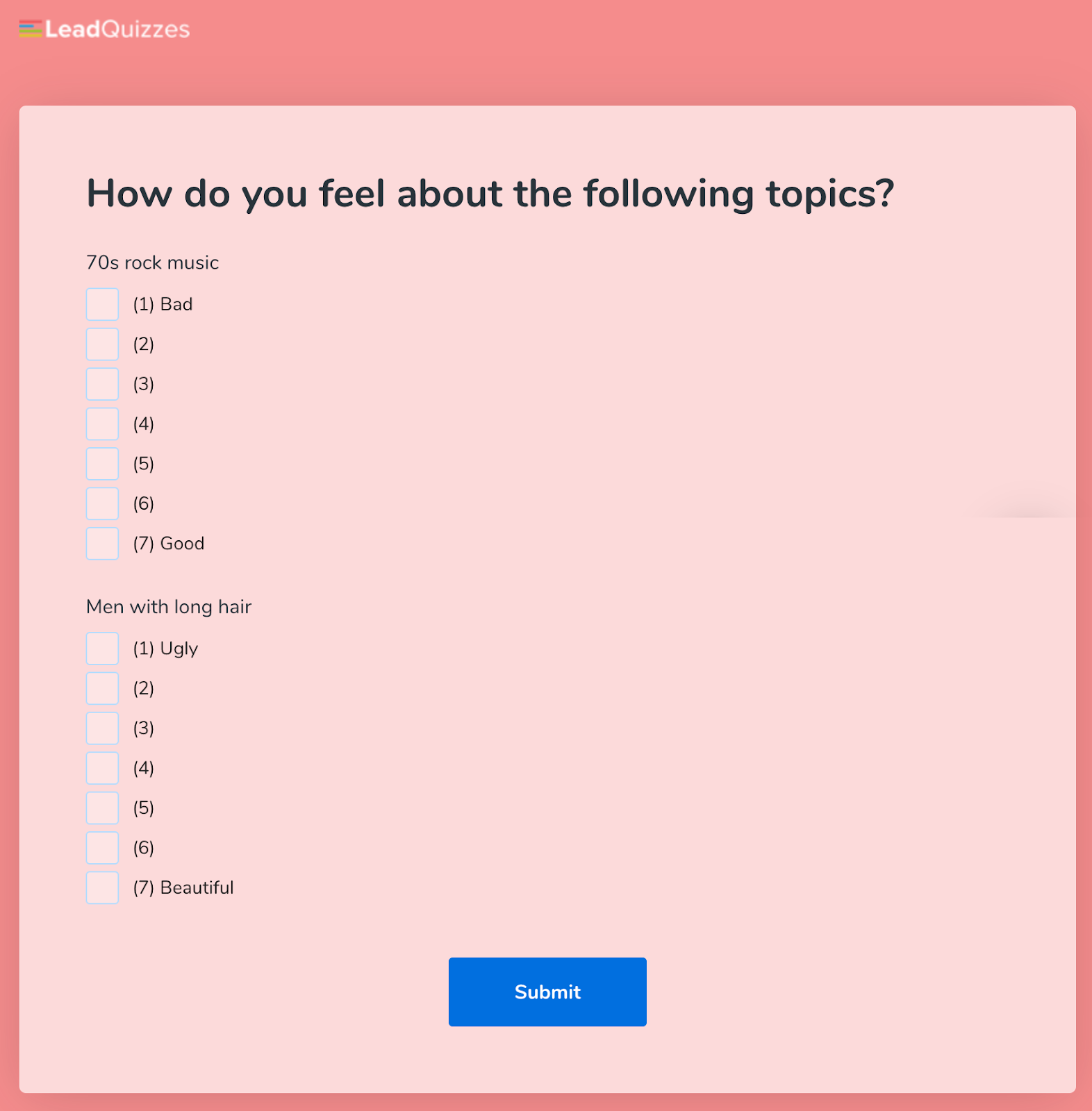

You can add as many topics to your survey/questionnaire and easily gather the responses for further analysis. If you’re using LeadQuizzes to make a survey based on the semantic differential scale, it’s advanced reporting feature will allow you to easily collect, export, and assess all of the answers.
Semantic differential vs. other types of survey scales
Semantic differential scale is just one of the scales used in surveys and questionnaires, of course. To help decide on the right one, here’s a short overview of different types of scales commonly used in surveys.
Likert scale
Likert scale is one of the most commonly used ways of measuring perceptions, attitudes, and opinions. It enables survey respondents to express their attitude by choosing one of the given answer options.
Similarly to semantic differential questions, which offer two answer options with several grading levels in between, Likert scale questions are characterized by a wide range of options to choose from, usually ranging from one extreme (e.g. ‘strongly agree’) to another (e.g. ‘strongly disagree’).
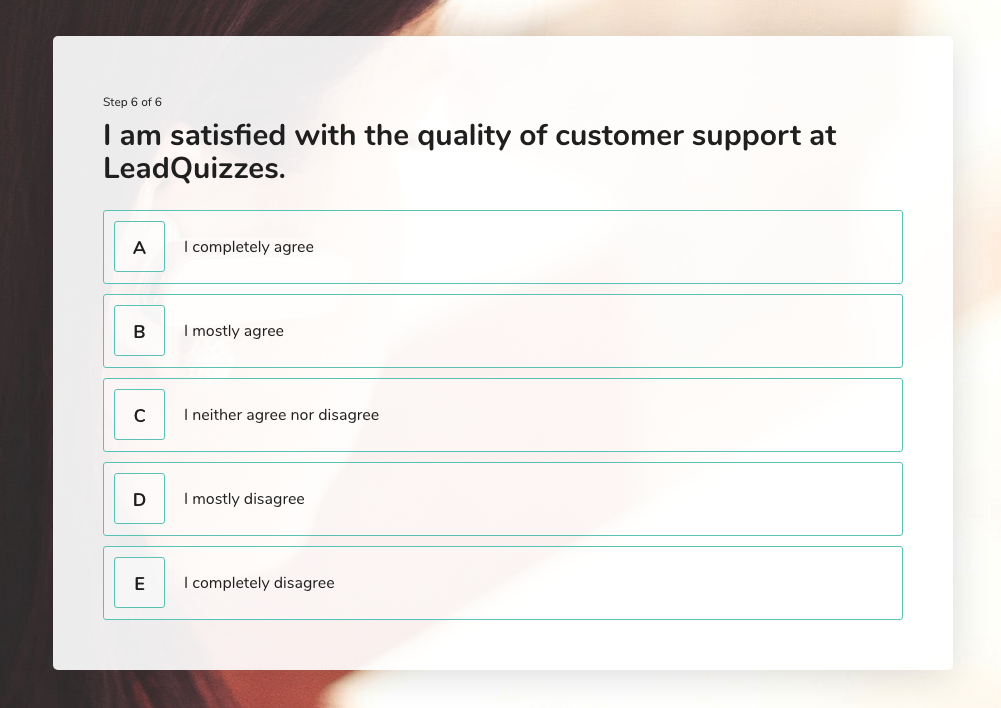

Even though Likert and semantic differential scales seem very similar, one of the main differences is that with Likert scales you rate a specific statement that refers to a particular topic, while semantic differential lets you rate the topic itself.
For example, in a Likert scale questionnaire, you can get a statement such as
I like survey scales.
And then you can pick from a range of options that vary in degree, such as “strongly agree”, “very much agree”, “not sure”, “pretty much disagree”, and “strongly disagree”.
The main issue with Likert scales is that they could lead to acquiescence response bias, where survey respondents would agree with a statement more often than disagree, whatever their true attitude or opinion.
This could be avoided either by structuring questions as real questions and not statements. Or by using a semantic differential scale. In a survey based on the semantic differential scale, you would have a topic “survey scales” and would be able to choose from a scale of polar adjectives that starts and ends with “like” and “dislike”. This way, there’s much less room for bias in research.
Thurstone Scale
Thurstone scale was one of the first scales ever used to measure attitudes on different topics and issues. This scale contains a set of statements about a certain topic along with a numerical value depicting how favorable or unfavorable it is deemed to be.
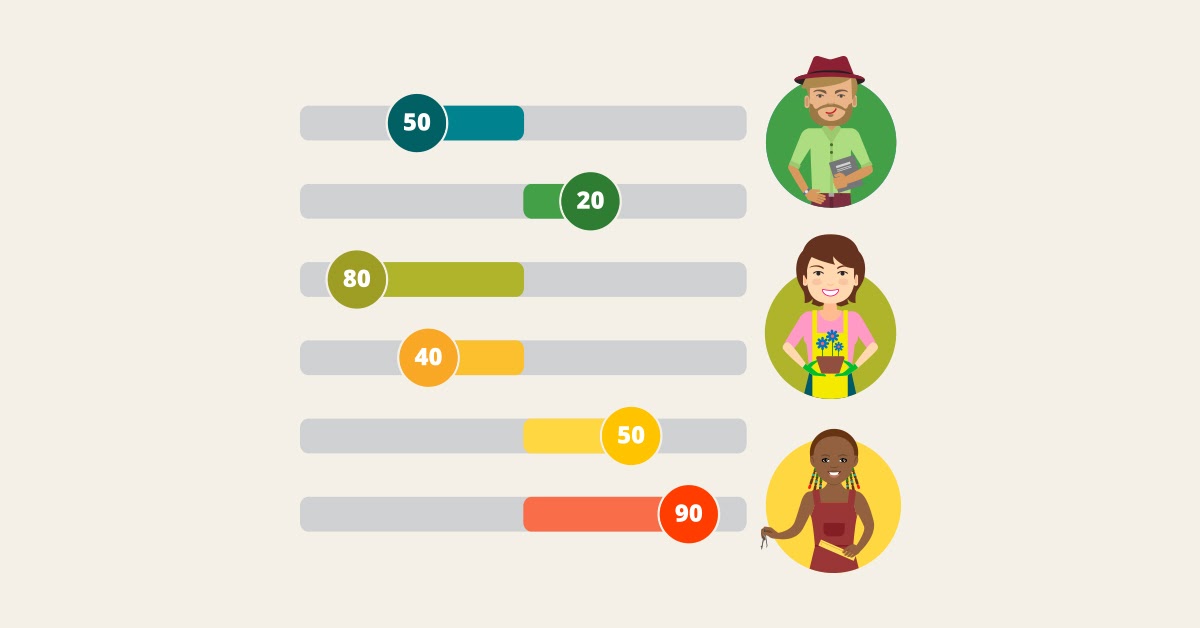

In such surveys, the respondents only tick those statements they agree with. After that, the researcher calculates the mean score that shows the respondent’s attitude on the issue in question. If you want to find out exactly how to make, score, and analyze surveys based on this scale, you can read more about the Thurstone scale.
Thurstone scale vs. semantic differential scale? Well, due to its complexity and advanced math behind it, Thurstone scale isn’t used that often in surveys anymore. In fact, the Likert scale was derived from the Thurstone scale, exactly due to the need to simplify the original scale. That being said, you’re much more likely to see the semantic differential scale used in research nowadays.
Guttman scale
The Guttman scale (also commonly referred to as the cumulative scale), measures the strength of the respondents’ opinion. It’s not just used to obtain an attitude, it assesses how positive or negative that attitude is considered to be.
In a way, it is similar to the semantic differential scale used to measure potency. Guttman scale rests upon a series of tightly related questions which increase in specificity. In most cases, those are ‘yes/no’ questions that can tell us how strongly a person approves or disapproves of a certain attitude or opinion.
Here’s an example of a survey question based on a Guttman scale:


In the example above, we have a somewhat more practical scale, where the respondents have to check all the statements they agree with (instead of answering 6 individual questions with “yes” or “no”). Here’s a more detailed guide on the Guttman scale, if you’re looking to learn more about how to incorporate it into your surveys and whether you should opt for it or decide on the semantic differential scale.
Now that you’ve learned more about the different scale options that you can use for your surveys, it’s time to decide on the right one for your needs. Whether you opt for a rather simplistic semantic differential scale, a more widespread Likert scale, or a bit more complex scales, such as the Guttman or the Thurstone scale, creating a survey can still be a breeze!
Just sign in to your LeadQuizzes account and choose from the list of our pre-designed templates or create a brand new survey from scratch.
